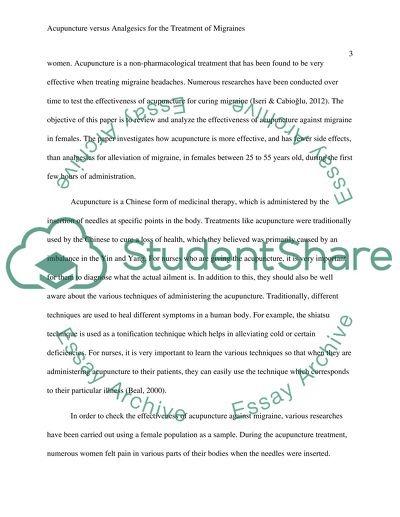Cite this document
(“Acupuncture versus Analgesics for the Treatment of Migraines Research Paper”, n.d.)
Acupuncture versus Analgesics for the Treatment of Migraines Research Paper. Retrieved from https://studentshare.org/health-sciences-medicine/1467674-acupuncture
Acupuncture versus Analgesics for the Treatment of Migraines Research Paper. Retrieved from https://studentshare.org/health-sciences-medicine/1467674-acupuncture
(Acupuncture Versus Analgesics for the Treatment of Migraines Research Paper)
Acupuncture Versus Analgesics for the Treatment of Migraines Research Paper. https://studentshare.org/health-sciences-medicine/1467674-acupuncture.
Acupuncture Versus Analgesics for the Treatment of Migraines Research Paper. https://studentshare.org/health-sciences-medicine/1467674-acupuncture.
“Acupuncture Versus Analgesics for the Treatment of Migraines Research Paper”, n.d. https://studentshare.org/health-sciences-medicine/1467674-acupuncture.


